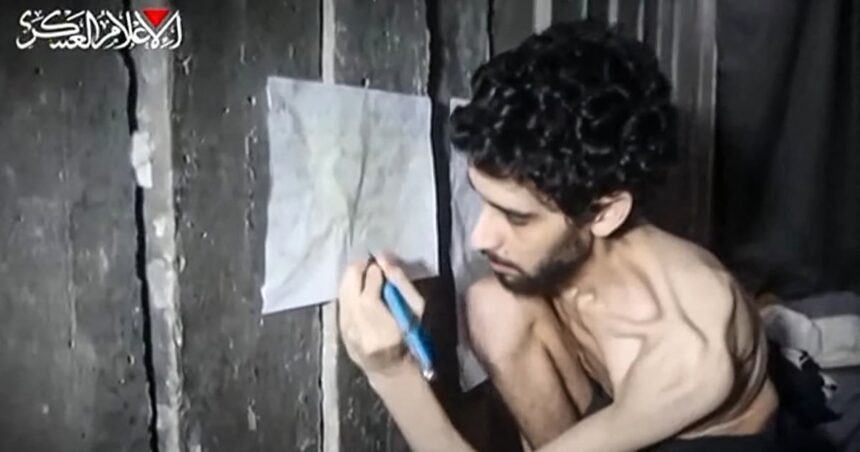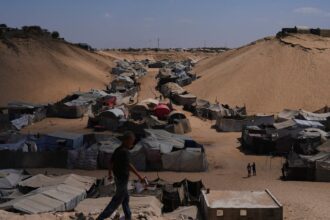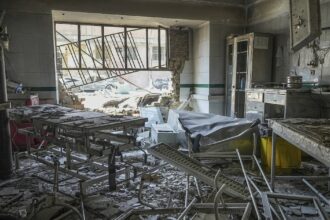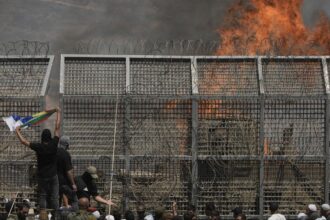The haunting images of six severely emaciated Israeli hostages rescued from Gaza this weekend have sent shockwaves through Israeli society, igniting renewed calls for Prime Minister Benjamin Netanyahu to prioritize a ceasefire deal that would secure the release of remaining captives. The dramatic rescue operation, while successful in retrieving these six individuals alive, has exposed the dire conditions endured by those still held in Hamas captivity since October 7th.
Medical professionals at Sheba Medical Center near Tel Aviv reported that the rescued hostages—Noa Argamani (25), Almog Meir Jan (21), Andrey Kozlov (27), Shlomi Ziv (40), Sahar Baruch (24), and Amit Buskila (28)—were suffering from severe malnutrition and significant weight loss, with some having lost up to 40 percent of their body weight. Dr. Itai Pessach, who is treating the freed hostages, described their condition as “the worst case of prolonged starvation I have seen in my career.”
“These individuals were subjected to extreme physical neglect,” Dr. Pessach told reporters. “Their bodies show signs of prolonged malnutrition consistent with months of inadequate food intake and poor living conditions.”
The rescue operation, conducted in central Gaza’s Nuseirat refugee camp, represents one of Israel’s most successful hostage retrieval missions since the conflict began. However, it has simultaneously underscored the increasingly desperate situation for approximately 120 hostages still held in Gaza, of whom Israeli officials believe around 40 may no longer be alive.
Families of hostages have intensified their protests, with thousands gathering in Tel Aviv’s “Hostages Square” on Saturday night. Einav Zangauker, whose son remains in captivity, addressed the crowd with palpable emotion: “How many more hostages must return on the verge of death or in body bags before this government acts decisively on a deal?”
The Israeli public’s reaction to the images has been visceral. A CO24 News poll conducted yesterday indicates that 72% of Israelis now support prioritizing a hostage deal even if it means compromising on other military objectives in Gaza. This represents a significant shift in public sentiment since January, when similar polls showed more divided opinions.
Netanyahu faces mounting political pressure as opposition leader Yair Lapid called the images “damning evidence of government failure,” while Defense Minister Yoav Gallant publicly stated that “the hostages’ condition demands immediate action on the ceasefire framework.”
The humanitarian catastrophe extends beyond the hostages. According to the Gaza Health Ministry, over 37,000 Palestinians have died since the conflict began, with famine conditions emerging across much of the territory. The United Nations has repeatedly warned of “catastrophic hunger” affecting Gaza’s civilian population, particularly children.
International mediators from Qatar, Egypt, and the United States continue working toward a three-phase agreement that would include hostage releases, increased humanitarian aid, and eventual cessation of hostilities. Secretary of State Antony Blinken is expected to return to the region this week for what American officials describe as “potentially decisive” negotiations.
Hamas, for its part, released a statement through spokesman Abu Obeida claiming the hostages’ condition reflects the “overall humanitarian situation in Gaza” and insisted that only a complete ceasefire will lead to their release.
The images of these six hostages—gaunt, frail, and traumatized—have crystallized the human cost of this prolonged conflict for many Israelis. As one CO24 World News analyst noted, “These are not just political bargaining chips; they are sons, daughters, fathers and mothers whose lives hang in the balance with each passing day.”
As pressure builds on all sides, the fundamental question remains: will these distressing images finally compel the necessary compromises to end the suffering of hostages and civilians alike, or will political calculations continue to override humanitarian imperatives in this devastating conflict?










